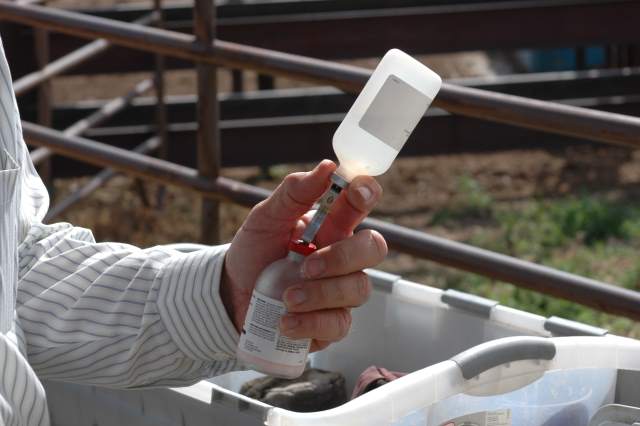June 10, 2015

Forget for a moment the returns relative to cost, and consider that, in the right conditions with the right cattle, preconditioning periods as short as 15 days can yield similar benefits to buyers as those preconditioned 45 or 60 days.
That's according to research conducted at Kansas State University (KSU) and included in a summary of preconditioning research last year.
“Under the conditions of our experiment, ranch-direct calves that were properly vaccinated before exposure to market conditions did not require ranch-of-origin weaning periods longer than 15 days for improvement in feedlot receiving and finishing,” say the KSU researchers. “This finding calls into question the validity of beef industry assumptions that ranch-of-origin weaning periods lasting ≥45 are necessary for optimal preconditioning of beef calves of all types and origins.”
John Jaeger, a KSU beef cattle scientist at the university’s Agricultural Research Center in Hays, was one of the researchers involved with the KSU study. “Calves weaned and shipped within the Great Plains don’t have the same stressors as those coming from outside the region. They’re trucked shorter distances and maintained in a similar environment with similar forage,” he says.
Overall, the KSU researchers interpreted the data to suggest that cattle originating from commercial-scale ranches and backgrounded there require a relatively short preconditioning period of approximately 15 days for optimal health and performance at the feedlot. They explain, “Conversely, weaning-management protocols that successfully increase calf body weight before shipment to a feedlot or an auction market may add value to calves that are sold after a ranch-of-origin preconditioning program.”
Other studies conclude that morbidly and mortality decline as preconditioning days increase before calves enter the marketing channel.
For instance, Glenn Selk, Oklahoma State University animal science professor emeritus, points out that many value-added calf sales require calves to be weaned at least 45 days ahead of marketing.
“Some cow-calf producers may wonder why the post-weaning period needs to be so lengthy,” Selk says. “Data from Iowa from over a 9-year period in a couple of their feed-out tests compared the health status of calves weaned less than 30 days to calves weaned longer than 30 days. Data from over 2,000 calves were summarized. Calves that had been sent to a feedlot at a time less than 30 days had a higher incidence of bovine respiratory disease (28%) compared to calves weaned longer than 30 days (13%). The percentage of calves that required three or more treatments also was significantly different (6% versus 1%) in favor of calves that had been weaned more than 30 days. In fact, the calves weaned less than 30 days were not different in health attributes than calves that were weaned on the way to the feedlot.”
Based on that data, Selk explains, “A summary of this lengthy study can be found online. Vac-45 calves apparently have a real advantage in terms of health, compared to calves weaned for less than a month or those weaned on the way to the livestock market for sale date. Certainly, part of the ‘value’ in value-added calves can be attributed to properly applied vaccinations. However, there is little doubt that a portion of the improved health is due to the length of time between weaning and the movement of calves to the next owner.”
Heading into the next weaning season with more questions than last year about calf prices this fall, it will interesting to see ultimate producer interest in trading risk earlier or later.
You might also like:
FDA releases final Veterinary Feed Directive rule on antibiotics
Ouch! Find out what Canada, Mexico want for COOL retaliation figures
How to prevent & treat pinkeye in cattle
Fed cattle market is 2014 market over again
You May Also Like



